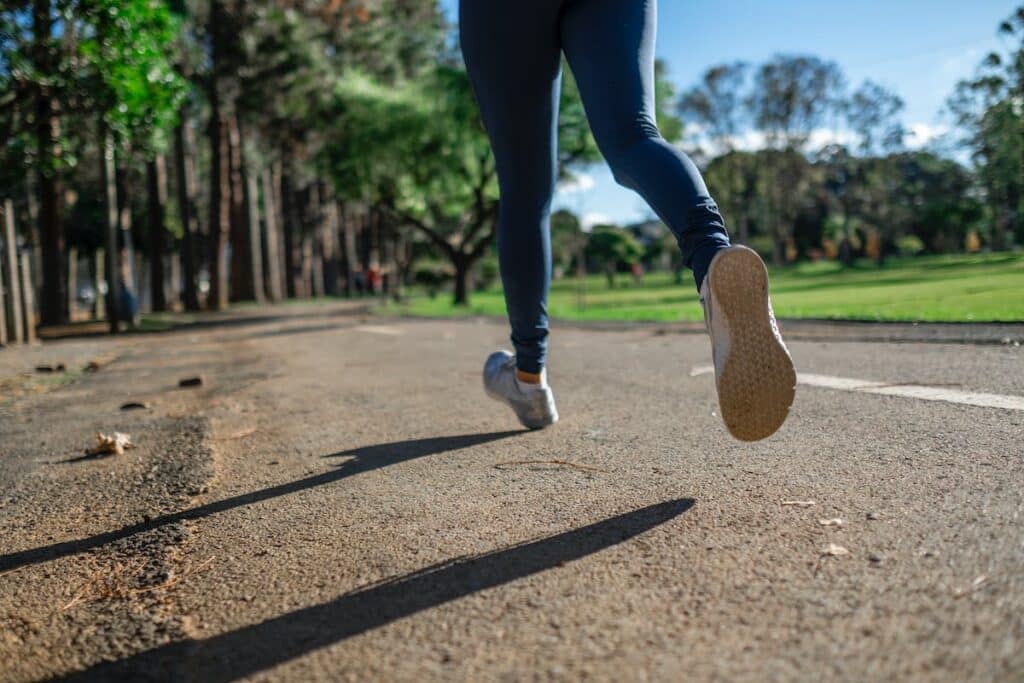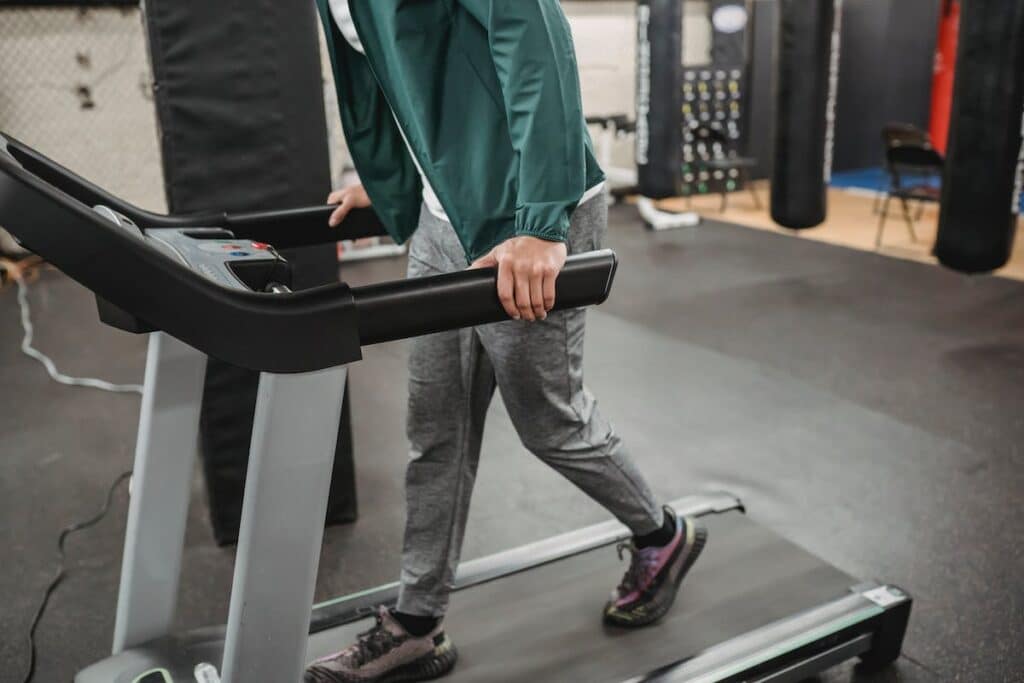Get ready to turn your daily stroll into a powerhouse glute workout! Gluteal muscles are more than just about aesthetics; they are foundational support for your lower back, hips, and knees. Strengthening these muscles can be as simple as incorporating specific techniques into your walking routine, which can lead to a myriad of health benefits.
In this article

Let’s explore how you can engage and sculpt your glutes with every step you take. Don’t forget, warming up is your secret weapon—it wakes up your muscles and gets them ready for action, reducing the risk of injury. I’ll also introduce you to additional exercises that complement your walking and target your glutes even more. So, lace up your walking shoes, and let’s get those glutes working!
Key Takeaways
- Building glute muscles is important for overall body alignment and to support the lower back.
- Weak glutes can lead to stress on the knees, hips, and lower back, and can affect proper form during activities like running.
- Walking alone may not directly build glute muscles, but it can be a beneficial form of exercise.
- To specifically target and build glutes, it is recommended to supplement walking with strength training exercises like deadlifts, squats, glute bridges, hip thrusts, and lunges.
Why does building glute muscles matter?
Strengthening the glutes is critical to overall body alignment and stability, as these muscles help support the lower back while lifting and stabilizing the pelvis and core. If the glutes aren’t strong enough, other surrounding muscles must compensate for their lack of strength, resulting in an increased amount of stress on the knees, hips, and lower back.
This can be seen when running – tucking the pelvis forward so that “the butt takes with it” helps keep proper form and avoid pain in those areas. To reap even more benefits from walking, it is important to mindfully move to activate the glutes; however this does not require anything excessive.
In addition to building tush strength, walking can also burn calories which may lead to fat loss in areas such as the buttocks. It is therefore essential to pair aerobic exercises such as brisk walking with targeted exercises like deadlifts and squats in order to build size and shape of one’s bottom muscles.
Does walking make your bum bigger or smaller?
Contrary to popular belief, walking alone is not an effective way to increase the size of gluteal muscles.
Instead, walking can actually result in a decrease in gluteal muscle size due to its low-impact nature and ability to burn calories.
While 10,000 steps per day have become a popular goal recommended by trackers, it does not have any major significance for building butt muscles.
Furthermore, National Academy of Sports Medicine recommends healthy adults engage in at least 150 minutes of moderate-intensity exercise per week; however, this alone will not build the booty muscles.
In order to successfully increase gluteal muscle size and shape it is important to supplement one’s daily walking routine with targeted strength training exercises such as deadlifts and squats, single-leg glute bridges and hip thrusts as well as curtsy lunges.
Performing these exercises before the walk can help activate and condition the muscles so that further conditioning can occur during the walk itself.
It’s also essential to remember that genetics play a significant role in determining how much muscle growth occurs with exercise.
How to activate your glutes when walking?
In order to maximize the benefits of walking for gluteal muscle conditioning, it is important to incorporate techniques that actively engage these muscles.
One way to activate your glutes while walking is by rolling your foot from heel to toe with each step you take. This helps recruit the glutes and increases power in each stride. Additionally, squeezing your butt cheeks together when making contact with the ground can help keep the glutes engaged throughout the duration of a walk. Aiming for 100 sweeps and squeeze steps during a walk can help build strength and tone in this area.

Another technique commonly used to engage the glutes while walking is increasing the incline on a treadmill or finding hills/stairs for outdoor workouts. By slowing down speed and increasing incline, more strain is put on the glutes which will then build more power over time when done consistently.
Finally, adding tush-toning moves such as lunges into your routine can also target those hard-to-reach muscles like your upper glutes which are essential for building strength and stability. For those just starting out, be sure to warm up properly before beginning any exercise program and maintain proper posture while performing exercises. As you progress, increase intensity gradually over time to achieve maximum results without injuring yourself in the process.
Here’s a step-by-step guide on how to build your glutes while walking:
1. Activate with Walking Lunges
- Begin with a 5-10 minute warm-up to get your blood flowing.
- Introduce walking lunges into your route by taking a sizable step forward with your right foot, aligning it straight ahead.
- Bend both knees to form 90-degree angles, making sure your right thigh is parallel to the ground, and your left knee is hovering just above.
- Emerge from the lunge with a robust stride, bringing your left foot into a lunge position.
- Perform five lunges on each leg, opting for shallower dips if you’re a beginner, or deeper lunges if you’re more experienced, optionally tapping your back knee to the ground.
2. Utilize Inclines for Glute Building
- If walking indoors, increase your treadmill’s incline to challenge your glutes. Outdoors, seek out hills or stairs.
- Slow down your pace to focus on the quality of each step, ensuring you’re pushing through your glutes with each movement.
3. Roll and Squeeze Technique
- While walking, consciously roll your foot from heel to toe.
- Start each step by landing on your heel, then as you roll towards the ball of your foot, contract your glutes firmly.
- Propel yourself forward by pushing off with the ball of your foot, relaxing the glute squeeze as you move into the next step.
- Set a goal to practice this “roll and squeeze” method for at least 100 steps during your walk.
Additional Tips:
- Maintain good posture throughout your walk, keeping your chest up and shoulders back.
- Don’t rush your steps; focus on the quality of the glute engagement with each movement.
- Consistency is key; aim to incorporate these techniques regularly into your walks for best results.
Supplementing Your Walking Routine
In order to obtain optimal gluteal strength and conditioning, it is important to supplement your walking routine with other exercises.
Resistance training with exercises such as deadlifts, squats, single-leg glute bridges, hip thrusts, and curtsy lunges are highly beneficial for building muscle in the glutes.
These exercises should be performed prior to a walk in order to activate the muscles and condition them further during the walking session.
It is important to remember that genetics can influence how much muscle growth and size change one will experience when performing targeted exercise routines.
Furthermore, incorporating tush-toning moves into a walking routine can help build glutes while also providing an array of additional benefits.
For example, slowing speed and increasing incline on a treadmill or finding hills/stairs for outdoor workouts will help build power in the glutes.
Squeezing butt cheeks together when making contact with the ground and aiming for 100 sweep and squeeze steps during each walk will help target these muscles.
Rolling feet from heel to toe with each step helps recruit the glutes.
Adding interval sprints helps increase calorie burn.
Finally, it is important to stretch before any form of exercise as this helps prevent injury while also aiding performance capacity by increasing range of motion at joints.
Effective Glute Exercises
Performing targeted exercises such as deadlifts, squats, single-leg glute bridges, hip thrusts, and curtsy lunges can help maximize the potential of gaining muscle in the glutes.
Deadlifting is an effective exercise to target the glutes since it works a variety of muscles at once while also requiring strength and stability.
Squats involve bending at the knees and hips to lower into a squatting position before standing back up again. This works both the quads and glutes by engaging both leg muscles simultaneously.
Single-leg glute bridges are another great option for targeting your booty; this move requires you to lie on your back with one knee bent and one foot flat on the ground before lifting your butt up off of the floor.
Hip thrusts involve sitting with your back against a bench while holding a weight across your hips then extending upwards until you reach full extension in order to work both sides of your butt equally.
Finally, curtsy lunges require stepping one foot behind and across the other while keeping both feet pointed forward before lowering down into a lunge position which targets multiple muscles including hamstrings, quads, and abs as well as glutes.
Frequently Asked Questions
How long should I walk to build my glutes?
The National Academy of Sports Medicine recommends healthy adults engage in at least 150 minutes of moderate-intensity exercise per week, which may include brisk walking to build glutes. More benefits are realized the more activity one does, so aim for 10,000 steps daily for the best results.
Is walking enough to build glutes?
No, walking alone is not enough to build glutes due to its low-impact and calorie-burning nature. To change the shape and size of the glutes, strength training with high-resistance exercises such as deadlifts, squats, bridges, etc. is necessary.
What is the best speed for walking to target glutes?
The best speed for walking to target glutes is slow and steady. To maximize muscle recruitment, slow down your pace and increase the incline on a treadmill or find hills/stairs for outdoor workouts. Squeezing butt cheeks together when making contact with the ground can also help build strength in the glutes.
How often should I do glute exercises?
Strength training exercises targeting the glutes should be incorporated into your routine two to three times per week, with at least one day of rest in between sessions. Proper form and adequate rest are essential for effective results.
Is it possible to build glutes without weights?
Yes, it is possible to build glutes without weights. Resistance exercises such as squats, hip bridges, and lunges can all help strengthen the glute muscles. Additionally, activities like walking briskly with an incline can also help target the glutes and provide resistance training.
Conclusion
The importance of engaging and building gluteal muscles while walking cannot be overstated.
By activating the glutes during walking, it is possible to improve posture, reduce pain in the lower back, hips, and knees, as well as increase stability and strength.
Additionally, supplementing a walking routine with effective glute exercises can further help build muscle mass and provide a multitude of other benefits.
Therefore, when looking for ways to improve overall health and fitness levels, engaging and building glutes while walking should not be overlooked.
